Bubble Hash: A Detailed History of Solventless Extract
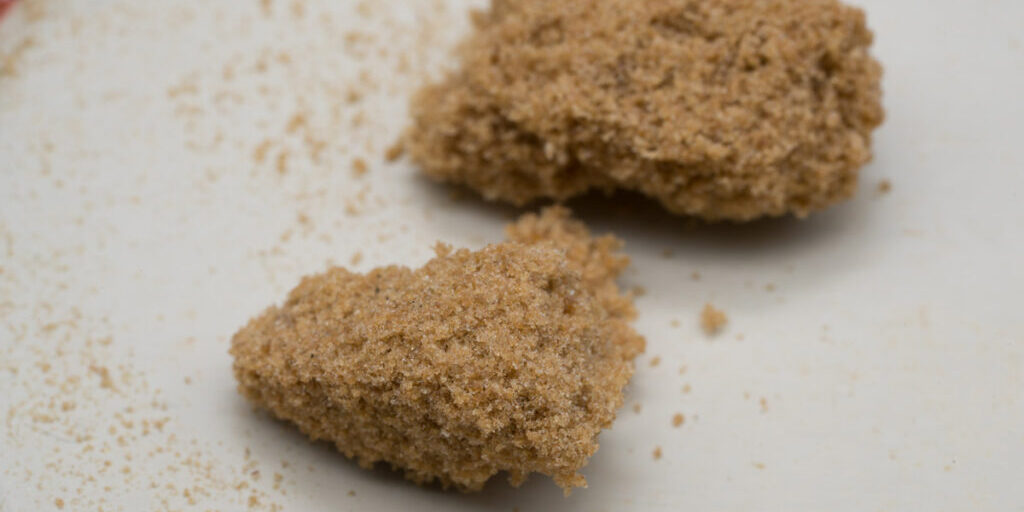
With continuing widespread legalization and increased acceptance of cannabis and cannabis-derived products, it’s important to maintain an understanding of cannabis history and how much the industry has evolved, as well as how it’s rapidly expanding.
As the oldest and one of the most popular solventless extracts, bubble hash is a potent cannabis concentrate made using cannabis, ice, water, and filter bags. Also known as ice water hash, this popular cannabis extract has a colorful history beginning with traditional hash, which has been used for thousands of years.
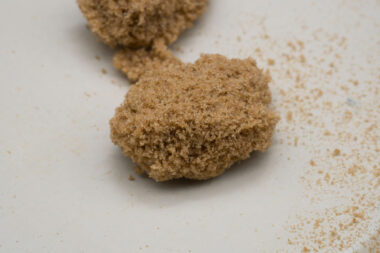
Whether you’re an enthusiast, historian, or professional in the cannabis industry, having a better understanding of the history of bubble hash can offer profound insight into the evolution of cannabis culture, the development of modern cannabis extraction techniques, and how concentrates have changed over time.
Here we’ll take a deep dive into the history of concentrates, starting with the origins of hash before moving into more modern history. Bubble hash was brought to the masses only a few decades ago when cannabis cultivation and concentrates were still very much an underground enterprise.
The History of Hashish
While bubble hash has been around for just a few decades, hash has been consumed for centuries.
Cannabis was first domesticated about 12,000 years ago, and early accounts of hash can be traced back at least 6,000 years ago (4000 BCE) to the Neolithic period. However, the first accounts of hash didn’t involve smoking the sticky resin. Instead, it’s believed hash was used for incense instead of ingestion or smoking, as incense was an extremely valuable commodity during these times.
The wider spread consumption of hash is believed to have begun a bit later during the 13th century throughout Persia and Central Asia, where it’s assumed that hash made its way to the Middle East via the Silk Road. As the use of hash began to expand, it’s commonly understood that the ancient form of the popular concentrate was eaten, rather than smoked as it is today.

Around the same time, the Egyptians were using hashish for its transcendent effects, getting high on what was known as “hashishah,” and by the late 1370s, consuming hash in Egypt was banned. Anyone found consuming hash during this time would face the punishment of imprisonment and getting their teeth pulled out. Despite these harsh punishment techniques, the use of hash continued to flourish in Egypt.
The Expansion of Hash Throughout the World
After reaching Egypt, hash use continued to travel the world. French troops that occupied Egypt at the end of the 18th century under Napoleon’s rule took hash back to Europe, despite the outlawing of cannabis by their commander. By the mid-1800s in Paris, Le Club des Hashischins—“the club of the hash eaters”—had been formed. This club, which included many of Paris’ elite, held monthly meetings where they openly explored the effects of hash. They believed this cannabis resin could increase their artistic abilities and creativity.
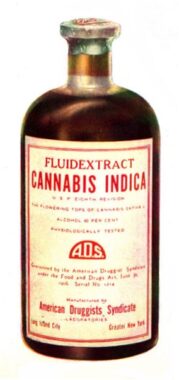
The use of hash became common in several European countries and the U.S., where it was used medically from the 1880s through 1900. During this brief period, hash was widely used to treat depression, appetite loss, nausea, and diarrhea—all reasons that people still turn to medical cannabis today.
With the prohibition of cannabis in the U.S. during the 1930s, the use of hash was also criminalized. It wasn’t until the mid-1950s that hash made its way back west, brought by people traveling on the “Hippie Trail” (or the Overland). The influx of hash that hit the U.S. and Europe in 1967 came from what’s known as the first hash haul.
Bubble hash wouldn’t make its way into the cannabis scene until a few decades ago. Like the history of hashish, the history of bubble hash can be found through oral accounts that have been passed down over time. While these legends don’t date back centuries, the origin of bubble hash can be traced back to the 1980s, when cannabis was still largely illegal, and the War on Drugs was raging.
The Origins of Bubble Hash
The advent of using ice water to remove the resinous glands from cannabis flowers to create hash is said to have been passed down to Nevil Schoenmakers, aka the “King of Cannabis,” an early cannabis crusader and founder of the first cannabis seed bank (“The Seed Bank of Holland”) in Amsterdam in the early 1980s. Schoenmakers created award-winning strains such as Super Silver Haze, Super Skunk, Nevil’s Haze, and Northern Lights Haze.
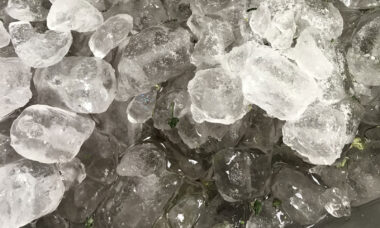
It was during the early 80s that Schoenmakers met David Paul Watson, aka Sadhu Sam or Sam the Skunkman, an underground California cannabis breeder. According to the ”legend”, an unknown American told Schoenmaker how resinous trichome heads sank when exposed to water, resulting in a unique cannabis resin that was powerfully potent. This information was shared with Sadhu Sam, who published a manual advertised in the November 1988 issue of High Times. This manual made it possible for cannabis enthusiasts to learn everything they needed to know about using water to create this potent solventless concentrate.
“Sadhu Sam’s Secret” method involved stirring crushed-up cannabis buds into a large container of cool water containing 10–20 times the amount of water to plant material. (This technique would then lend itself to creating ice hash; a cannabis concentrate made up of trichomes previously sifted through water and ice). Stirring this mixture vigorously and then letting it settle resulted in the first crude batches of bubble hash in history. Ultimately, this paved the way for the refinement of bubble hash as it developed into the product most are familiar with today.
Mila Jansen, aka the Queen of Hash, is responsible for creating the mesh bags (bubble bags) used today for ice water extraction. Jansen was a crucial part of the history and evolution of bubble hash that the industry knows today. In 1967, Jansen opened Kink 22—a boutique turned teahouse—where she shared hash from Turkey, Lebanon, and Afghanistan with her patrons.
Around this time, while using the washing machine, she came up with the idea of “washing” cannabis buds to create hash. With her existing knowledge of making hash, she turned her idea into the very first hash maker—the famous “Pollinator”, a dry sift machine. In 1994 the machine was featured as a new product in High Times, where it gained serious attention. In 1998, Jansen took the hash-making process a step further by inventing a filter bag system to make hash with ice and cold water (the “Ice-O-Lator” bag system). With the invention of this mesh bag filtration system, bubble hash extraction really took off in the industry.
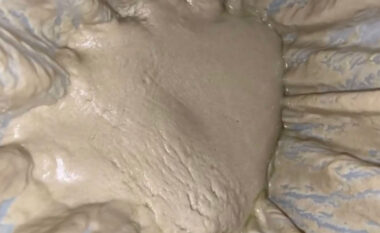
The Evolution of Bubble Hash
The underground cannabis community of the late 1980s and early 90s had a huge role in the development of the industry. After Jansen invented the Ice-O-Lator bag system, Marcus “Bubbleman” Richardson met with Jansen for a deal to sell their products in Canada. Despite the well-intentioned meeting, the deal did not go through and Richardson ultimately created his own bags for ice water extraction.
Richardson’s Bubble Bag brand flourished and set the stage for bubble hash extraction techniques that are still widely used today. Richardson not only created the first 3-bag filtration kit, but also the first 4-, 5-, 6-, 7-, and 8-bag kits.
Modern Bubble Hash Extraction
Today, more than 20 years later, cannabis legalization is slowly sweeping the globe, and countless brands have joined the bubble hash category. While bubble hash filter bags haven’t changed much over the years other than some refinement, techniques for making bubble hash have only continued to improve. The wash bag system is still considered the best way to isolate and collect trichome heads to make high-quality bubble hash, and techniques for extracting ice water hash are ever-evolving.
Whether you’re a professional in the commercial cannabis industry or a cannabis enthusiast interested in making bubble hash, there are a variety of bubble hash-making kits and machines readily available. Making bubble hash at home can be done easily with filtration bags and a 5-gallon bucket, while commercial operations have numerous options for state-of-the-art commercial hash washing machines that produce large quantities of bubble hash.
Some of the most sophisticated systems, for example, can wash up to 20,000+ grams of fresh frozen cannabis flower or up to 4,500+ grams of dried flower. These commercial washers are equipped with cutting-edge technology and lab-grade parts that comply with current cannabis regulations. They thoroughly extract trichomes from the plant matter to consistently produce large yields of high-quality bubble hash while keeping the final product potent.
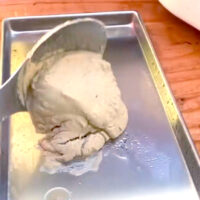
Ultimately, hash made for commercial purposes can be sold as a product on the retail market or used with a rosin press, which offers the potential for massive profit and ROI. The evolution of hash, along with cannabis legalization, has opened the door for this category of concentrates after bubble hash made its debut just a few decades ago.
Last Thoughts On The History Of Bubble Hash
Cannabis undoubtedly contains one of the most colorful histories of any other plant. Professionals in the commercial cannabis industry who better understand the history of bubble hash can gain insight into developing new and more efficient extraction methods and better appreciate the factors that have driven innovation in the cannabis industry over time.
Like what you read?
Get more insider industry knowledge sent right to your inbox
"*" indicates required fields